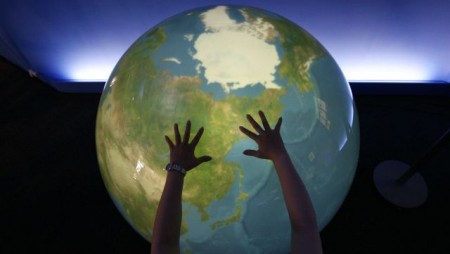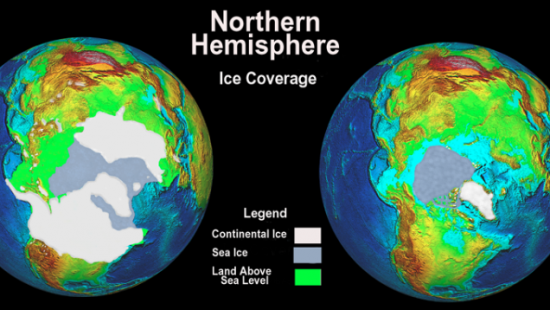February 12, 2016 – Human civilization has arisen in an interglacial warming period. It was a mere 12,000 years ago that our planet cycled from an Ice Age to milder conditions. The cause of cyclical warming and cooling has had nothing to do with us. Scientists believe Ice Ages are a function of the amount of solar energy striking our Northern Hemisphere plus the amount of heat trapping gases in the atmosphere. It is this positioning and orbital inclination that causes fluctuations in the amount of energy reaching our planet.
The cyclical changes were first observed by Milutin Milankovitch, a Serbian astronomer and mathematician, who calculated their magnitude. He determined there were three specific cycles impacting Earth climate.
Milankovitch Cycles Explained
The first was eccentricity. This is the shape of Earth’s orbit around the Sun, not circular but elliptical. At aphelion, the furthest point in Earth’s elliptical orbit Earth receives 6% less solar radiation than at perihelion, the closest point. When the ellipse exaggerates than the difference can be a delta of 20 to 30% in terms of solar energy received.
The second is axial tilt. Earth’s axis wobbles at a periodicity rate of 41,000 years. During that time the angle changes from 24.5 to 21.5 degrees. Today the axial tilt is at 23.5 degrees which should mean more exaggerated seasons as solar radiation to polar regions is impacted negatively in the winter and more positively in the summer. But some scientists believe that a less pronounced axial tilt promotes the growth of ice sheets because warmer winters attract more moisture to the poles leading to increased snowfalls. At the same time the moderate tilt means summers are cooler at the poles and hence less melt occurs. We humans haven’t been around long enough to fully measure a single cycle so we really don’t have the data as of yet to know which theory is correct.
The third is precession, a measure of the Earth’s axial wobble, a different phenomenon than tilt. It appears that the Earth wobbles like a spinning top going back and forth. That wobble has the Earth’s axis pointing some times to Polaris (the North Star), and at other times pointing to Vega. The periodicity of precession is every 23,000 years. The wobble coincides with aphelions and perihelions. When the axis points to Vega the Northern Hemisphere experiences winter at the aphelion and summer at the perihelion leading to greater seasonal contrasts.
Add Human Generated Carbon Dioxide to Milankovitch Cycles
In a study published in Nature back in January of this year, scientists at the Potsdam Institute for Climate Impact Research, looked at human interference with the Earth’s natural climate cycles. States lead author, Andrey Ganopolski, “Even without man-made climate change we would expect the beginning of a new ice age no earlier than in 50.000 years from now – which makes the Holocene as the present geological epoch an unusually long period in between ice ages.”
The study concludes that human-generated carbon dioxide (CO2) emissions from the burning of fossil fuels is now in sufficient volume to delay the onset of the next Ice Age by 50,000 years. In other words the natural cycle observed in the geological record is broken. We will skip an entire Ice Age cycle. States Ganopolski, “It is mind-boggling that humankind is able to interfere with a mechanism that shaped the world as we know it.”
The researchers created an Earth system model that simulated past Ice Ages and the global carbon cycle looking at ice volume in the Northern Hemisphere. It was determined that even small increases in CO2 impact ice sheet formation. Emissions of 1,000 to 1,500 Gigatons of CO2 postponed the onset of Northern Hemisphere continental glaciation by 100,000 years.
Our modern civilization is a product of past glaciations. Human civilization arose as the last Ice Age melted away. We carved out our agricultural revolution and first cities from that ice legacy of rivers, deltas and lakes left in the melting wake. And now, because of our human civilization we face a new geological era of anthropogenic origin dubbed the “Deglacial” according to Potsdam Institute Director, Hans Joachim Schellnhuber, a contributing author to the study.










